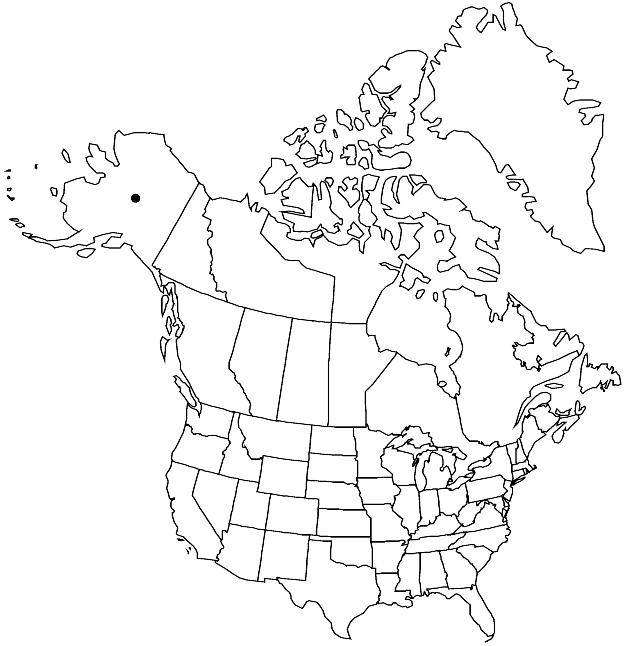Difference between revisions of "Cardamine blaisdellii"
Bot. Gaz. 33: 146. 1902.
FNA>Volume Importer |
FNA>Volume Importer |
||
| Line 11: | Line 11: | ||
|name=Cardamine microphylla subsp. blaisdellii | |name=Cardamine microphylla subsp. blaisdellii | ||
|authority=(Eastwood) D. F. Murray & S. Kelso | |authority=(Eastwood) D. F. Murray & S. Kelso | ||
| − | }}{{Treatment/ID/Synonym | + | }} {{Treatment/ID/Synonym |
|name=Cardamine microphylla var. blaisdellii | |name=Cardamine microphylla var. blaisdellii | ||
|authority=(Eastwood) Khatri | |authority=(Eastwood) Khatri | ||
| Line 29: | Line 29: | ||
|elevation=50-1000 m | |elevation=50-1000 m | ||
|distribution=Alaska;n;e Europe (Russian Far East;Siberia). | |distribution=Alaska;n;e Europe (Russian Far East;Siberia). | ||
| − | |discussion=<p>Cardamine blaisdellii was treated by R. C. Rollins (1993) as a synonym of C. microphylla, but the morphological differences (see key) and molecular data (R. B. Jørgensen et al., 2008) clearly demonstrate that they are distinct.</p> | + | |discussion=<p><i>Cardamine blaisdellii</i> was treated by R. C. Rollins (1993) as a synonym of <i>C. microphylla</i>, but the morphological differences (see key) and molecular data (R. B. Jørgensen et al., 2008) clearly demonstrate that they are distinct.</p> |
|tables= | |tables= | ||
|references= | |references= | ||
| Line 53: | Line 53: | ||
|publication year=1902 | |publication year=1902 | ||
|special status= | |special status= | ||
| − | |source xml=https://jpend@bitbucket.org/aafc-mbb/fna-data-curation.git/src/ | + | |source xml=https://jpend@bitbucket.org/aafc-mbb/fna-data-curation.git/src/8f726806613d60c220dc4493de13607dd3150896/coarse_grained_fna_xml/V7/V7_713.xml |
|tribe=Brassicaceae tribe Cardamineae | |tribe=Brassicaceae tribe Cardamineae | ||
|genus=Cardamine | |genus=Cardamine | ||
Revision as of 17:59, 18 September 2019
Perennials; usually glabrous throughout, rarely pilose. Rhizomes cylindrical, slender, 0.7–1.5 mm diam. Stems erect or ascending, unbranched, 0.5–2(–2.5) dm. Rhizomal leaves pinnately 5- or 7-foliolate, 2.5–12 cm (not fleshy), leaflets petiolulate; petiole 1.5–4(–9) cm; lateral leaflets similar to terminal, or smaller and margins usually toothed, rarely entire; terminal leaflet (petiolule 0.15–0.3 cm) blade suborbicular to broadly obovate, 0.4–1.5 cm × 2.5–14 mm, base obtuse to subcordate, margins 3–5-toothed, (apiculate). Cauline leaves 1–3, (3–)5-foliolate (alternate), petiolate, leaflets petiolulate or subsessile; petiole 0.2–2(–6.5) cm, base not auriculate; lateral leaflets similar to terminal; terminal leaflet subsessile or petiolulate (to 0.2 cm), blade obovate to oblanceolate, 0.5–1.5 cm × 3–10 mm, base cuneate, margins 3-toothed or entire. Racemes ebracteate. Fruiting pedicels erect to ascending, 0.7–22 mm. Flowers: sepals oblong, 2–3.5 × 2–2.5 mm, lateral pair slightly saccate basally; petals white, broadly obovate, 7–10 × 3–6 mm (clawed, apex rounded); filaments: median pairs 3–4 mm, lateral pair 2–3 mm; anthers oblong, 1–1.5 mm. Fruits linear, 1.6–4 cm × 1–1.3 mm; ovules 14–24 per ovary; style 0.7–3 mm. Seeds brown, oblong, ca. 1.5 × 1 mm. 2n = 28, 42.
Phenology: Flowering Jul–Aug.
Habitat: Moist streamsides, meadows, river gravel, mesic grounds, wet tundra, moist humus, scree slopes, calcareous fellfields
Elevation: 50-1000 m
Distribution

Alaska, n, e Europe (Russian Far East, Siberia).
Discussion
Cardamine blaisdellii was treated by R. C. Rollins (1993) as a synonym of C. microphylla, but the morphological differences (see key) and molecular data (R. B. Jørgensen et al., 2008) clearly demonstrate that they are distinct.
Selected References
None.